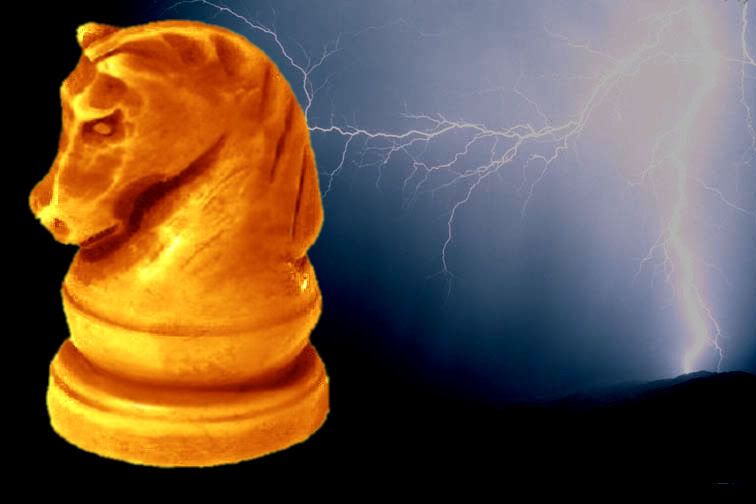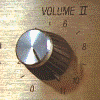Post by JohnH on Jun 19, 2006 20:32:18 GMT -5
Heres a query about connecting an extension cab to a combo.
I have a 40W tube powered amp (Marshall DSL401), which has a single 16 Ohm speaker and two output jacks wired in parallel (the internal speaker plugs into one of them). It has a switch that allows the output to be matched either to 8 Ohm or 16 Ohm. The idea is that you can plug in an extra 16 Ohm cab, on its own with output set to 16 Ohm, or together with the internal speaker, with output set to 8 Ohm. Or one can plug in an 8 Ohm cab, without using the internal speaker.
I have an 8 Ohm closed-back 4x12 cab, containing four 35W Celestion G12L’s. It sounds great plugged into the combo, but very different to the single 12 in the combo, which has a brighter punchier sound which I also like.
I’d like to be able to run the cab in addition to the combo speaker – not because I really need to, but just because it would be more awesome. So here are my ideas on how to do it, for which I'd be grateful for any comments. I don’t wish to mod the amp, nor do anything non-reversible.
1. I just plug the 8 Ohm cab in, in addition to the 16 Ohm internal speaker. The amp would be set to 8 Ohms but it would see 5.3 Ohms, based on the nominal resistances. This is not recommended in the handbook, but I’m not sure if it would actually cause a problem. With its lower resistance, 2/3 of the power would come through the cab
2. I disconnect two of the speakers in the cab, making it a 16 Ohm cab. There’s plenty of power-rating headroom available in the two other speakers. Now the amp can see 8 Ohm combined, which is OK. But do the two disconnected speakers spoil the bass by passively letting sound out by being pushed out when the active speakers are pulling in?
3. As 2, but I also add a shorting link to each of the disconnected speakers, across their terminals. This might damp their movement, making them less susceptible to being passively driven out-of-phase.
4. Physically remove two speakers and blank them off with panels of MDF or ply. Cab is now a 16 Ohm 2x12, but can be put back to original if needed.
5. Keep all the speakers active, but feed the input to the cab through an extra 8 Ohm resistor. Impedance is now 16 Ohms for the cab, so the amp is happy with both running, set to 8 Ohm output. The cab takes 20W, of which the resistor takes half. I’d make the resistor out of say 4 x 5W 33 Ohm in parallel. With this, there is some loss of output due to the resistor dissipation, which is OK because I don’t drive the amp to maximum. The resistors might affect the tone of the cab, being a non-inductive part of the load. Most of the sound output (2/3) now comes through the combo.
6. A version of 5, but with a lower resistance (hence moving towards option 1), so that both cab and combo make the same sound output. I figure the value of this resistor is 3.3 Ohms (I won’t list the theory). The amp now sees a combined resistance of 16 Ohms in parallel with 11.3 Ohms, which is 6.6 Ohms – not too far away from 8 Ohms.
7. Alternatively, with 5 Ohms in series with the cab, I can get very close to matching an 8 Ohm overall resistance (about 7.2 Ohms), and also very close to matching output between cab and combo(about a 1db difference)
8. Any other ideas?
Cheers
John
I have a 40W tube powered amp (Marshall DSL401), which has a single 16 Ohm speaker and two output jacks wired in parallel (the internal speaker plugs into one of them). It has a switch that allows the output to be matched either to 8 Ohm or 16 Ohm. The idea is that you can plug in an extra 16 Ohm cab, on its own with output set to 16 Ohm, or together with the internal speaker, with output set to 8 Ohm. Or one can plug in an 8 Ohm cab, without using the internal speaker.
I have an 8 Ohm closed-back 4x12 cab, containing four 35W Celestion G12L’s. It sounds great plugged into the combo, but very different to the single 12 in the combo, which has a brighter punchier sound which I also like.
I’d like to be able to run the cab in addition to the combo speaker – not because I really need to, but just because it would be more awesome. So here are my ideas on how to do it, for which I'd be grateful for any comments. I don’t wish to mod the amp, nor do anything non-reversible.
1. I just plug the 8 Ohm cab in, in addition to the 16 Ohm internal speaker. The amp would be set to 8 Ohms but it would see 5.3 Ohms, based on the nominal resistances. This is not recommended in the handbook, but I’m not sure if it would actually cause a problem. With its lower resistance, 2/3 of the power would come through the cab
2. I disconnect two of the speakers in the cab, making it a 16 Ohm cab. There’s plenty of power-rating headroom available in the two other speakers. Now the amp can see 8 Ohm combined, which is OK. But do the two disconnected speakers spoil the bass by passively letting sound out by being pushed out when the active speakers are pulling in?
3. As 2, but I also add a shorting link to each of the disconnected speakers, across their terminals. This might damp their movement, making them less susceptible to being passively driven out-of-phase.
4. Physically remove two speakers and blank them off with panels of MDF or ply. Cab is now a 16 Ohm 2x12, but can be put back to original if needed.
5. Keep all the speakers active, but feed the input to the cab through an extra 8 Ohm resistor. Impedance is now 16 Ohms for the cab, so the amp is happy with both running, set to 8 Ohm output. The cab takes 20W, of which the resistor takes half. I’d make the resistor out of say 4 x 5W 33 Ohm in parallel. With this, there is some loss of output due to the resistor dissipation, which is OK because I don’t drive the amp to maximum. The resistors might affect the tone of the cab, being a non-inductive part of the load. Most of the sound output (2/3) now comes through the combo.
6. A version of 5, but with a lower resistance (hence moving towards option 1), so that both cab and combo make the same sound output. I figure the value of this resistor is 3.3 Ohms (I won’t list the theory). The amp now sees a combined resistance of 16 Ohms in parallel with 11.3 Ohms, which is 6.6 Ohms – not too far away from 8 Ohms.
7. Alternatively, with 5 Ohms in series with the cab, I can get very close to matching an 8 Ohm overall resistance (about 7.2 Ohms), and also very close to matching output between cab and combo(about a 1db difference)
8. Any other ideas?
Cheers
John






